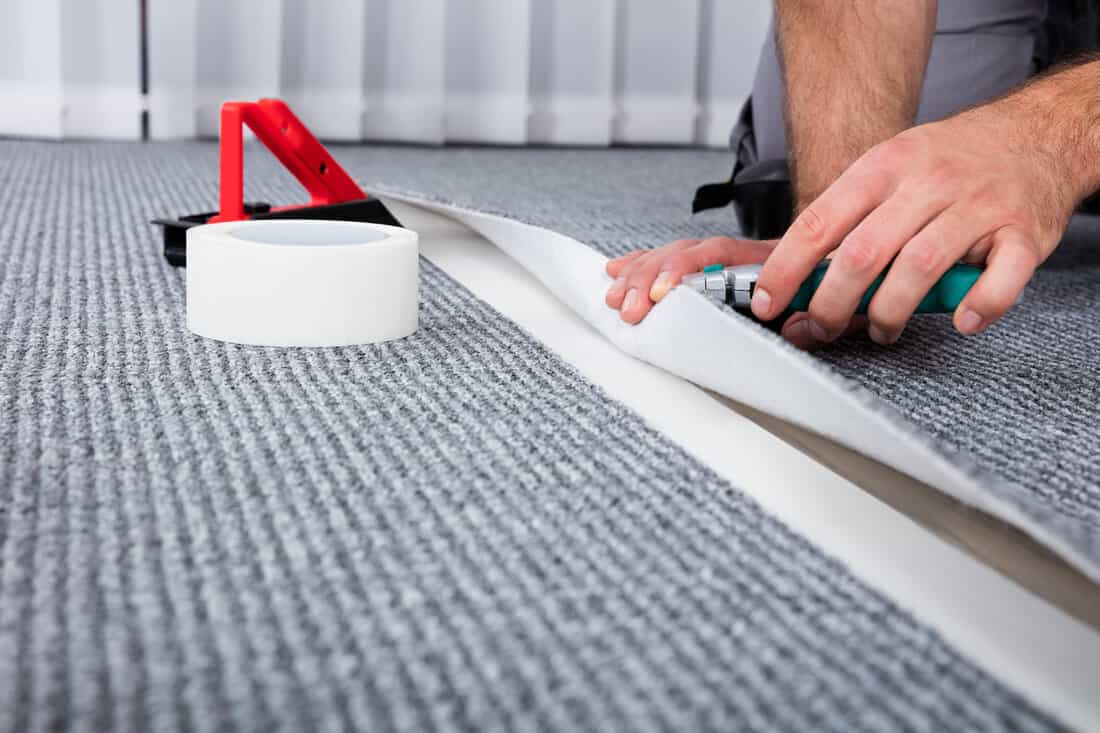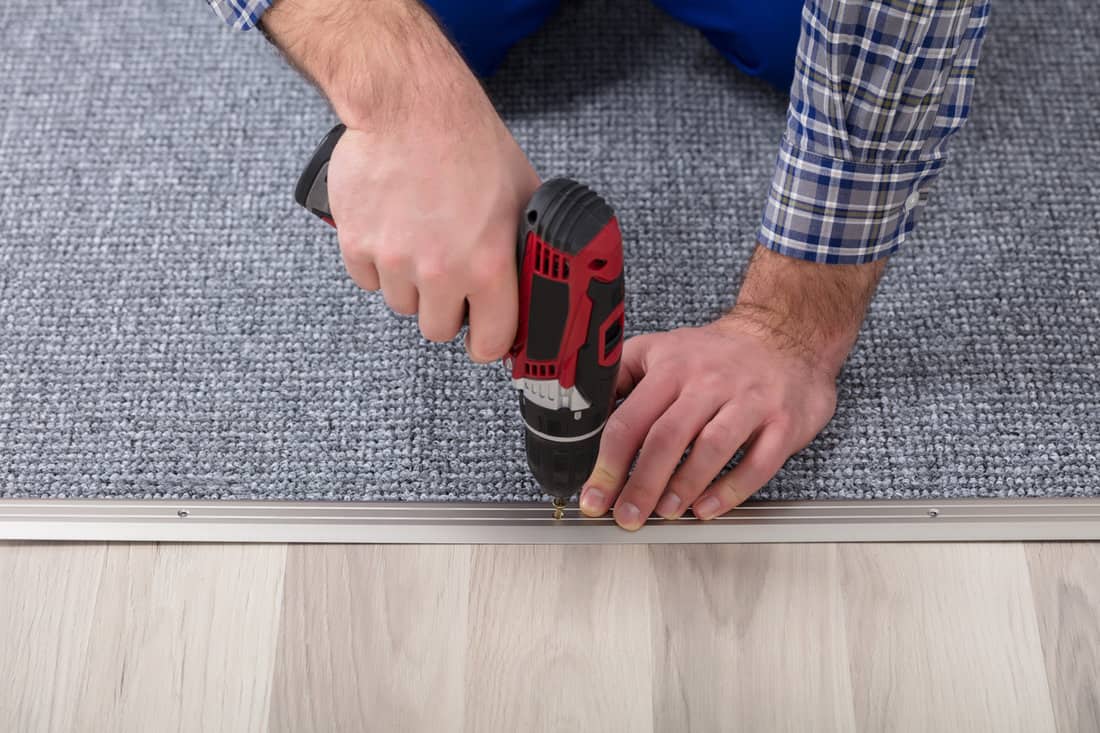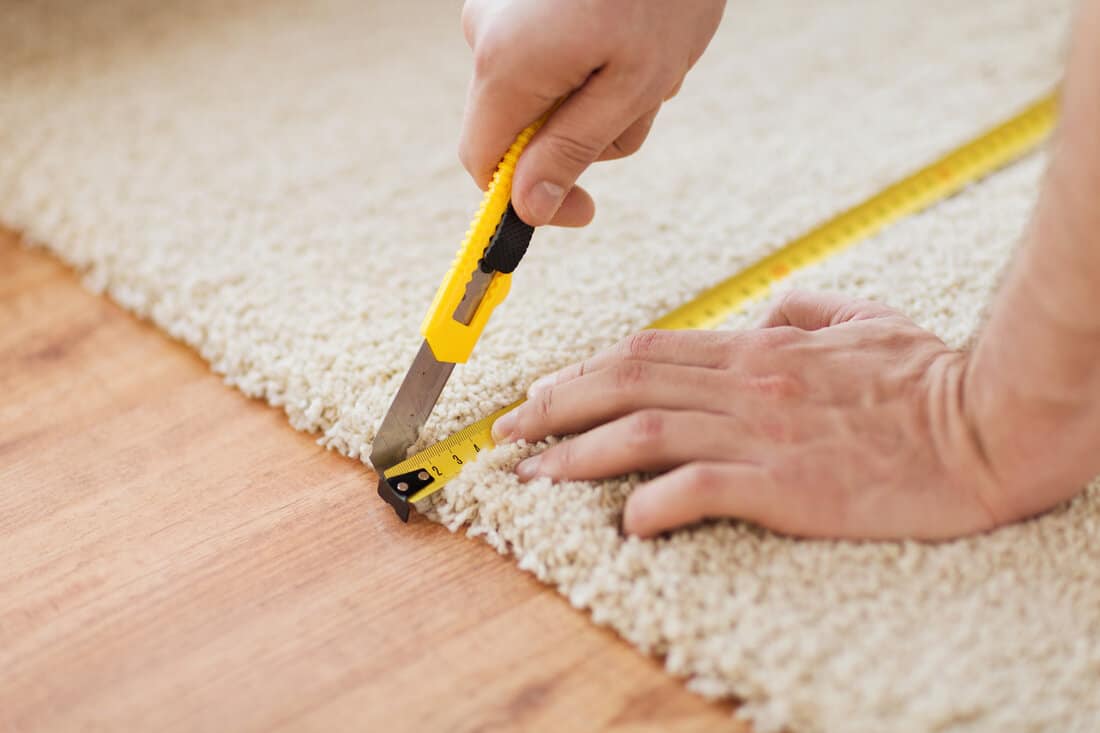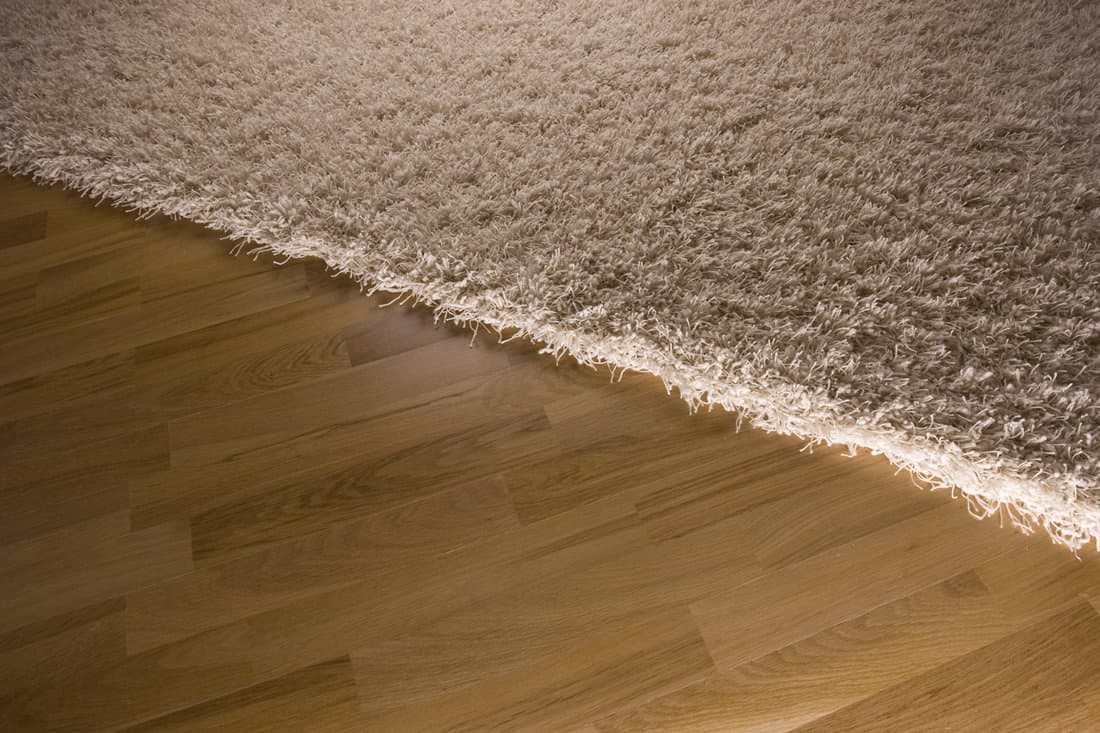No one wants to come home and find that their beautiful piece of carpet has frayed edges. Not only is it unsightly, but it can mean that your carpet needs either serious or minor repair. There are, however, ways to prevent your carpet from fraying as well as ways to fix it. We've pulled together some of the best methods.
Frayed carpeting can be caused by a few different factors, including furniture moves, improperly installed carpeting, and general wear and tear. And if you have owned your home for 10 years or longer, you have probably come across frayed carpeting at some point. The good news is that it can be prevented. Here are a few ways to prevent your carpet edges from fraying:
- Seal the edges with heat
- Cut-off loosened carpet fibers before they become frayed
- Apply a carpet binder to the seams
- Use sliders when moving interior furniture
- Apply carpet binder tape to the edges
- Install transition strips
When you invest time and money into installing the carpet, it can be a little disappointing to see it come apart at the edges, especially if it's seen relatively little traffic. However, there are various DIY solutions that you can use to fix the carpet, as well as several ways to prevent it. Continue reading to learn about them.
![Parquet and carpet. How To Keep Carpet Edges From Fraying [6 Methods]](https://homedecorbliss.com/wp-content/uploads/2021/02/Parquet-and-carpet.-How-To-Keep-Carpet-Edges-From-Fraying-6-Methods.png)
6 Ways To Keep Carpet Edges From Fraying
We sometimes add affiliate links and content that was curated and created by our team with the help of advanced ai tools to help showcase the best design styles.

These 6 methods are sure to prevent your carpet edges from fraying. Let's look closer at each method.
Seal the edges with heat
One of the quickest ways to prevent the edges of your carpet from fraying is to use a heat gun to melt the edges so that they will remain in place and adhere to the carpet padding beneath them.
You can also use a blowtorch for this if you do not have a heat gun-- though the heat gun is safer, of course. When you are applying any type of direct heat to the carpet, be sure not to hold it directly on top of the carpet, but 3-6 inches away so that it's just enough heat to touch the carpet without burning it. Burning it can create an entirely new problem that you'll have to fix.
Cut-off loosened carpet fibers before they become frayed
Another great way to prevent the edges of your carpet from becoming frayed is to nip the problem in the bud by cutting any loose fibers from the edge of the carpet that may be on the verge of fraying. This may seem like a straightforward task, and it is for the most part.
However, when inspecting the edges of the carpet for loose fibers, be sure not to cut any fibers that are still attached to the carpet backing (it's easy to do this accidentally). Also, when using your shears to cut the fibers, be sure to cut in a straight line to avoid cutting any other stitched fibers.
See this utility knife on Amazon.
Apply a carpet binder to the seams
Binding the carpet at the seam can help to enhance its appearance. There are quite a few carpet binders that you can purchase, but Instabind tends to be the top choice. You can purchase Instabind on Amazon or at stores like Walmart, Target, or Walgreens for under $20. Its application is fairly simple and you can bind your carpet seams within a matter of minutes.
See this carpet binder on Amazon.
Use sliders when moving interior furniture
One common reason why carpets may fray is from being snagged during furniture moves. It's not something that you may consider, but it's definitely worth taking note of before your next large furniture purchase.
The legs of dining tables, end tables, and sofas can easily rip the edges of a carpet, causing it to eventually fray. One way to prevent this is to apply furniture sliders to the bottom of your furniture pieces before moving them across the carpet. The sliders will provide a smooth, even surface, and prevent the furniture from damaging are scratching your floors. They're especially helpful if the furniture is heavy.
See these furniture sliders on Amazon.
Apply carpet binder tape to the edges
A carpet binder tape is also a good way to prevent your carpet edges from becoming frayed. The binding tape will hold your carpets and rugs down firmly to the floor, keeping them from moving around, and keeping the edges in place. It can also keep your area rugs from becoming a safety hazard and being tripped on.
In addition to binder tape, you can also apply edge grippers to carpet edges that need a little support. These grippers are washable and reusable and work best for small or large area rugs, carpeting, and bathroom rugs. Carpet tape, however, can provide you with a more permanent solution for keeping the edges of your carpet held down to the floor, and it won't leave residue should you decide to remove it.
Install transition strips

If you are looking for a permanent and decorative solution to prevent your carpet edges from becoming frayed, you can also install transition strips. Transition strips almost work as a decorative safety feature in the home, helping homeowners to avoid tripping over the edges of carpets that may lead to hardwood floors or tiles.
The strips typically come in three materials: metal, vinyl, and wood. They also come in different colors and sizes, the latter of which can be customized to fit your thresholds. Transition strips are great for preventing frayed carpet edges, as they cover the edges of the carpet and are nailed down to secure the carpet to the floor. They only take about 20 to 30 minutes to install and can be purchased from any online local hardware store for around $20.
See this metal transition strip on Amazon.
How Much Does It Cost To Bind Carpet Edges?
The cost to have a professional bind your carpet can range depending on where you live. Most professional carpenters charge for the service by the linear foot of the area that needs to be bound.
It can range from $1 to $3.50 per foot. So, for example, a 10x10 room would cost $40-$140. If you plan to make it a DIY project, you can purchase a carpet binding kit for around $20, or a heat gun for around $25. Other binding materials that you may need will bring your total costs to around $40 to $60.
How Do You Fix A Frayed Edge Of A Carpet?
If you were unable to prevent your carpet from fraying, don't fret. You can simply fix the frayed edges by binding them with a bit of binding tape. This is one of the quickest methods to fix the carpeting, and one of the most effective. We'll outline how to use binding tape to fix your carpet's frayed edges.
Things you'll need:
- Instabind
- Hot glue gun
- Clear tape
- Shears or a utility knife

Step 1. Assemble your tools
Load your hot glue gun and assemble all of your tools and place them in the room where the damaged carpeting is located.
Step 2. Trim frayed carpet fibers
Use a straightedge or utility knife to trim any loose carpet strings and frayed pieces along the edges of the carpet. Make sure that the edges of the carpet are straight, as you don't want the final result to be a crooked carpet edge.
Step 3. Apply binding tape to edges
Grab your Instabind and make a clean cut that is the same length as the carpet area that you will be binding. Be sure to leave the adhesive backing on the Instabind as you don't want it to stick to itself during the application.
Step 4. Position binding tape
Pull back the adhesive backing from the Instabind and apply it to the edge of the carpet right in the middle. If you are working on an especially long area of carpet (2 feet or more), do not cut the Instabind. Instead, roll it out along the edge pressing it currently to the carpet as you work your way to the end. Once you have applied the Instabind to all of the frayed areas, cut the excess with your shears.
Step 5. Apply heat to bind the edges
Next, grab your hot glue gun and apply a bead of hot glue between the carpet and the edge of the Instabind and hold it in place for a couple of minutes to allow the glue to set. Continue this process until you have repaired all of the frayed edges on the carpet. If your carpet is on the thin side, trim the Instabind at a 45-degree angle on the corners of the carpet to ensure that it doesn't show.
Can You Bind A Carpet Yourself?

Yes, you don't necessarily need a professional carpenter to bind your carpet, especially if the area is relatively small. The biggest factor to consider when deciding whether or not to make it a DIY project is the length of the carpet area that needs binding. You can determine how much it would cost to outsource it as opposed to the time, cost, and effort that it will take to complete the project yourself.
Wrapping Things up
Unfortunately, daily usage and other factors can cause the edges of your carpet to become frayed at some point. The good thing is that this is a relatively easy problem to fix and it can definitely be a DIY project. There are several ways that you can prevent your carpet from fraying including heating the edges, using binder tape, and removing loose carpet finders.
Before you go, be sure to check out some of our other posts:
How To Remove Permanent Marker And Other Ink Stains From Carpet
How To Dry A Wet Carpet [12 Steps]
![How To Keep Carpet Edges From Fraying [6 Methods], Close-up Of A Carpet Fitter's Hand Installing Grey Carpet With Wireless Screwdriver](https://homedecorbliss.com/wp-content/uploads/2021/02/How-To-Keep-Carpet-Edges-From-Fraying-6-Methods.png)







In the supplies needed section, clear tape is mentioned. In the instructions section, clear tape isn’t mentioned. I don’t want to miss a step, so I’m wanting to know what to do with the clear tape.